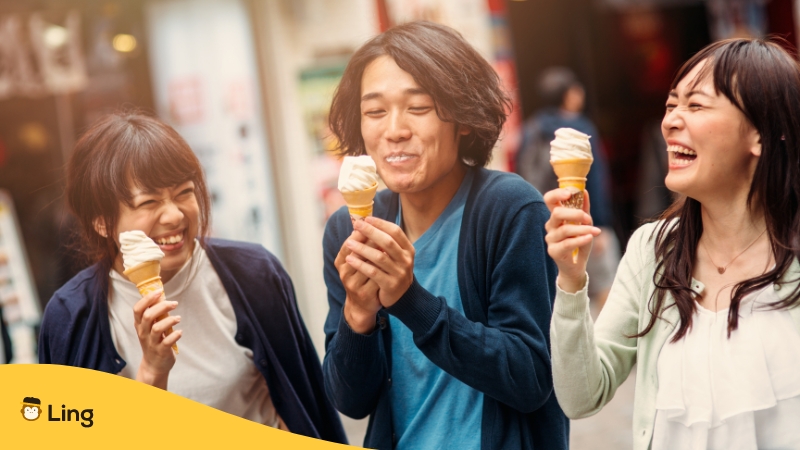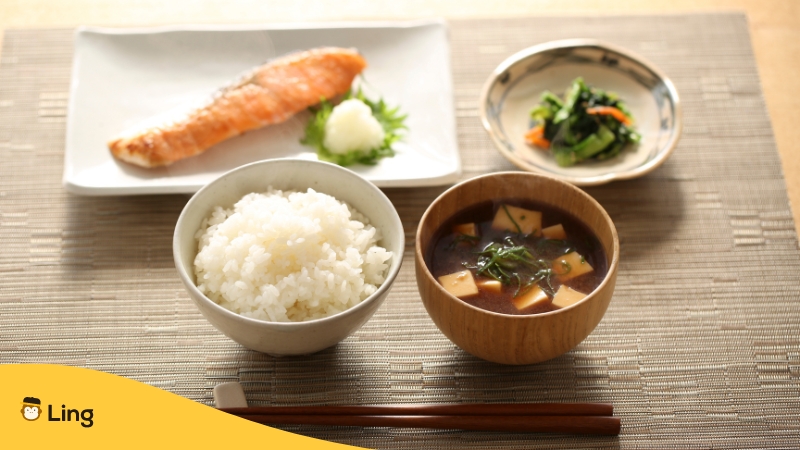Want to begin each day with a flourish in Japan but don’t know the phrase “good morning in Japanese?” In that case, you should read on!
Like other countries, in Japanese culture, people have a primary phrase customarily used to greet people with a good morning.
But you know, human beings are so creative, and we’ve developed many words and phrases to convey the same idea, from hey to “hi” to “hello.” So, of course, Japan is in the same boat.
In addition, an ultimate point to remember is that there is a hierarchy of respect in Japanese society. Some phrases are only appropriate to use with a particular group of people and never directly used with some people, depending on your relationship with that person. Don’t be afraid; it’s not that tough to pick up.
You can only befriend Japanese people if you know how to greet them. The first thing you must learn is how to say good morning in Japanese!
How To Say Good Morning In Japanese?
These are two basic phrases you will hear Japanese greet people.

#1 おはようございます (Ohayou Gozaimasu)
This is a greeting version of good morning that you say in formal situations, such as with your boss, coworkers, and teachers at school. Also, remember to do the Japanese bow after or even as you say this greeting phrase.
#2 おはよう (Ohayou)
A formal form, built from おはよう (ohayou) and ございます (gozaimasu), has already been mentioned. However, to make this a more informal greeting, you can omit ございます (gozaimasu).
Thus, “おはよう (ohayou),” which is shorter and sounds friendlier, is used exclusively by Japanese people when they are in a casual setting with their family members or friends.
Tips
After saying good morning in Japanese, you can also follow by asking them this; “お元気ですか?”(o genki desu ka), which means “how are you?” in Japanese.

What Terms Do Young People Often Use Instead Of おはよう (Ohayou)
Do you have a lot of close friends in Japan, and you’d like to find a more interesting way to say “good morning” to them? Here are a few words of how Japanese people, particularly younger people, greet their friends and families.
#1 やあ (Yaa)
Does this sound like an anime phrase to you? It means “hey” or “hello,” which can be used at any period. The term is popular among teens and young adults. So, remember that you should never use it in formal settings.
#2 ヤッホー (Yaahoo)
A “hello” said in such a manner is notably feminine. It’s common among young people, children, and women. Similar to the English word “yoohoo,” from which it is derived. You may have noticed that when young people or anime characters express this expression, they often pose cutely with their hands raised above their heads.
#3 おっす (Ossu)
It’s commonly used as a form of “hey” among boys, particularly in sports and martial arts. So it can give a sense of masculinity when listening to it.
Older Japanese people don’t typically use it, but some younger people do when hanging out with friends.
Here’s a funny story, Jay, or Chanathip Songkrasin, is a Thai professional footballer. He plays for Kawasaki Frontale of the J1 League and the Thai national squad.
In an old interview, he talked about his first season with Hokkaido Consadole Sapporo when he practiced saying “おはよう ご ざ い ます (ohayou gozaimasu)” to greet Japanese players correctly.
However, they use the word “おっす (ossu)” when greeting other players. He was puzzled, but now he gets it.
Japanese People Say “Good Morning” At A Furious Pace!
Basic expressions like “おはよう ご ざ い ます (ohayou gozaimasu)” can be challenging to understand if you’re not used to the rapid pace of Japanese pronunciation.
So, casually, Japanese people sometimes say it very quickly; ensure your ears are perked up!
| Speed Levels | Japanese | Romaji | Sound |
| 1 | おはようございます | Ohayou gozaimasu | |
| 2 | はよざいます | Hayozaimasu | |
| 3 | おざます | Ozamasu | |
| 4 | おざす | Ozasu | |
| 5 | ざす | Zasu | |
| 6 | す | Su |

What Is The Typical Breakfast In Japan?
Ever been curious about the morning meals of people in other parts of the world? Then, for enjoyment, we’d like to list Japanese morning meals!
Traditional Japanese Breakfast Set
In the morning, Japanese people often eat steamed rice with miso broth, tamagoyaki (an egg-rolled dish), grilled fish, pickles, salad, and hot green tea. This standard package can be swapped out for different items while still providing a high intake of essential nutrients.
Japanese Rice Balls – おにぎり (Onigiri)
Onigiri, or Japanese rice balls, have become the best option for a quick and easy meal in Japan when people don’t have time to prepare a full traditional breakfast. Onigiri can be filled with various ingredients, including plums, mentaikio (pollock roe), various types of fish, seaweed, and more. In addition, you can eat onigiri either hot or chilled.
Other Common Japanese Greetings
Here are other greetings that are very common to hear when you visit Japan.
Ready To Greet Japanese People In The Morning?
As you can see, the Japanese have a wide range of politeness. Even when simply greeting someone, you must consider this when selecting the appropriate Japanese word to say. Learning about their culture will not only help you avoid awkward situations, but it will also improve your social skills when you meet Japanese colleagues or friends.
The Japanese language has a broader range of Japanese greeting phrases that are fascinating to learn. So, if you want to learn more, get the Ling app now!
Learn Japanese With The Ling App Now!
The Ling app makes it simple to study the Japanese language. We don’t just catalog words and sentences; we show you how to use them correctly with numerous instances from real-world conversations. So, if you sign up for Ling‘s Japanese lessons, you’ll achieve the following:
- Master Japanese alphabets such as hiragana, katakana, and kanji faster!
- Boost your vocabulary memorization, which is useful for everyday conversation.
- Improve your listening skill by listening to the audio of the native Japanese accents.
Most Japanese learners chose the Ling app to help them succeed, so why not join them? Download the Ling app from Google Play Store or App Store and prepare to be fluent in Japanese soon!























